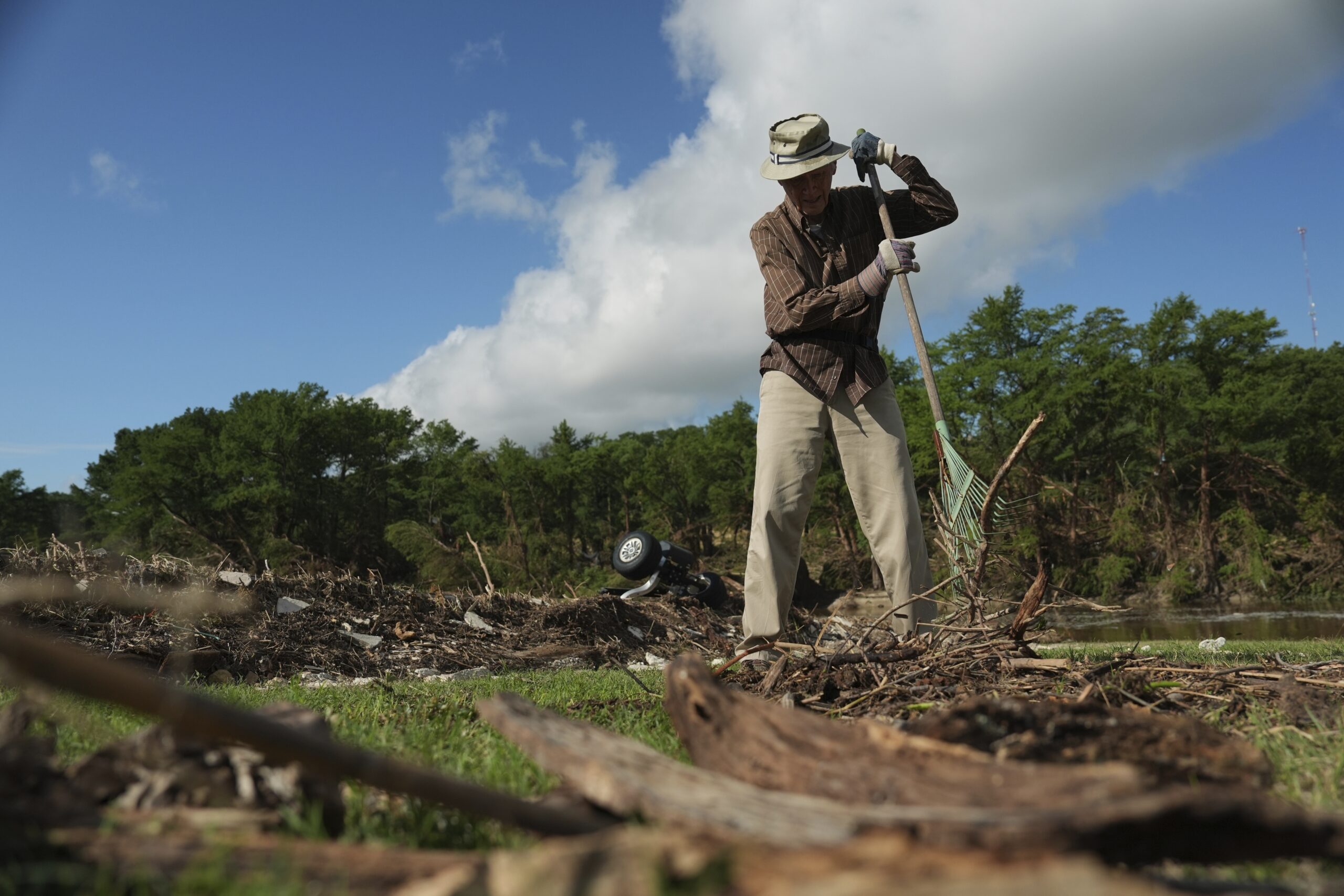ustxtxb_obs_1989_04_21_50_00014-00000_000.pdf
Page 9
could only hurt the taxpayers. His files bulged with details: The Grand Parkway Association’s board of directors, who would determine the parkway’s alignment and design, was dominated by representatives of the Cinco Ranch. In addition to Walt Mischer, Jr., other directors included Charles Pence, who ran the real estate division of Mosbacher Energy Corporation, and Jack Hooper, who performed the same job for the Abercrombie interests. Mosbacher and Abercrombie had reserved some of the choicest ranch property right next to the parkway route for future sale or development. The Grand Parkway Association’s president was Representative Ed Emmett, sponsor of the bill under which the association was organized. It turned out that Emmett, at the time his bill was passed, was also employed as the $50,000-a-year executive director of the North Houston Association, whose members included both the Mischer Corporation and Vinson & Elkins. The North Houston Association, a developer group that says it is devoted to the “orderly growth” of the region, had been lobbying for the Grand Parkway for several months; it was, in fact, the moving force behind Emmett’s bill.’ Vinson & Elkins’s Robert Randolph, the attorney who wrote the bill, went on to represent the Grand Parkway Association as legal counsel. His firm also counted among its major clients the Mosbacher Energy Corporation and Robert Mosbacher himself, as well as the Mischers. While Virgil Knox drew the lines connecting the landowners to the parkway, the Grand Parkway Association was proceeding rapidly with its work. The new association swiftly engaged one of Houston’s biggest engineering firms Turner, Collie & Braden, a member of the North Houston Association and a major contractor for Cinco Ranch development to start drawing maps. This burst of activity was rewarded within weeks when the Texas highway department officially approved the parkway’s first segment. Scheduled to begin construction by 1986, it would run south six miles from Interstate 10, directly through the Cinco Ranch, thus creating 2.23 miles of valuable highway frontage. News of the revived parkway sparked a fever of land speculation in the rice-growing counties north and west of Houston. While property along the parkway route had risen sharply in value, both the Mosbachers and Mischers were still selling Cinco Ranch holdings. In December 1984, only six months after buying the ranch from Mosbacher and Abercrombies, the Mischers turned around and sold about 800 acres of the most valuable acreage for $70 million to another developer. For their part, the Mosbachers had held onto a few hundred acres of the choicest land along the edge of the ranch nearest the parkway route, Which they sold in 1985 for an additional 14 APRIL 28, 1989 $12.9 million. Not surprisingly, the Mosbachers and the Mischers were satisfied with Ed Emmett’s record as state legislator, North Houston Association director, and Grand Parkway Association president. So when the smooth young legislator decided in 1985 to run for statewide office, one of his first supporters was Robert Mosbacher, Sr., who loaned him a private plane and pilot to fly around Texas while campaigning. Rob Mosbacher, Jr., gave his friend Ed $1,000, and an energy company in which the Mosbachers were major stockholders donated another $1,000. Walter Mischer, Jr., contributed $500. In the summer of 1985, when Knox thought he had finally disentangled the whole Grand Parkway plot, he took his evidence to reporters at the Houston Post. He felt, he says, that “exposure of the situation was crucial,” and grew “very frustrated when the Post sat on it for months.” Finally, on February 1, 1986, he wrote to Texas attorney general Jim Mattox. In his letter, accompanied by selected documents, Knox requested an investigation of the myriad conflicts of interest surrounding the Grand Parkway. “Is it legal,” he asked, “for directors of the Grand Parkway Association to individually reap windfall profits from their private investments because of their position as board members of a nonprofit corporation sanctioned by the Highway Commission? . . . Is it legal for the Texas Highway Commission to delegate its responsibilities to special interest groups with obvious conflicts of interest? . . . Is it legal for developers to [be] . . . supporting Mr. Emmett indirectly through the North Houston Association while he is promoting their legislation and lobbying for its passage? Does this constitute illegal lobbying or bribery?” A few closing words expressed his outrage: “One is compelled to question: Are these men benevolent citizens lending their talents and sacrificing their time to solve Harris County’s traffic woes, or greedy businessmen devising clever schemes to enhance their own investments and enrich themselves with taxpayer funds?” Attorney General Mattox who, despite his populist learnings, is also an admirer of Walter Mischer, Sr. \(and a man who to Knox’s letter or phone calls. A few weeks later, the Houston Post published a long, page one article by investigative reporter John Mecklin and his colleague Mary Flood that elaborated some of the conflicts Knox had discovered in the Grand Parkway deal. While the Houston Post investigation focused on the Mischers and Texas Highway Commission chair Robert Lanier \(who, the Post discovered, also owned 1700 acres of land along the connection between the association and the Mosbacher-Abercrombie interests. But the story, which ran on February 26 illustrated by a map of the parkway route showing each parcel of land owned by the GPA directors, was embarrassing to the highway commission. In response, Lanier immediately set about instituting new rules regarding conflict-of-interest for transportation corporations like the Grand Parkway Association. As a result, by the end of April 1986, Walter Mischer, Jr. , and Ed Emmett had been forced to resign their positions on the Grand Parkway board. Bob Lanier, who had been cleared of any wrongdoing by Attorney General Mattox, promised to abstain from any decisions that might affect his holdings. But Lanier told the Houston Post that he still thought privatization was a good way to get a highway built. He always knew, he said, that “what would motivate this project is avarice and greed.” Mischer’s comments on resigning were more circumspect. “We think the policy changes are healthy and good,” he said at the time. “I favor anything that helps eliminate controversy.” Mischer, Rob Mosbacher, Jr., and Ed Emmett all later denied that the sale of the Cinco Ranch was connected to the Grand Parkway scheme or the Texas Transportation Corporation Act. Mosbacher, Jr., insisted that, busy with his 1984 campaign for the Senate, he had never paid any attention to the Grand Parkway; the decision to sell the Cinco Ranch had simply been, he said, “a smart move.” As far as Virgil Knox is concerned, the resignations of Mischer and Emmett and the adoption of new ethical rules by the highway department were “cosmetic… He points out that the Cinco Ranch deal had already been completed, and the parkway’s alignment already approved. “They’ve made their millions off of it.” The Grand Parkway “has nothing to do with transportation,” he explains with a laugh. “There are no traffic jams at the Cinco Ranch. Even the cows have trouble finding each other out there. In fact, I seriously doubt the whole parkway will ever be built. It will be built if it benefits the right people. And it’s a terrible injustice to the taxpayers of Texas. We have a multibillion-dollar highway fund that certain people in high places have special access to. So even in bad times, when everybody’s going broke, they just put a highway through that land. Nobody can compete with that.” IF GROUND IS broken to begin the first section of the Grand Parkway as scheduled this May, the taxpayers of Texas will discover that it is less of a bargain than originally advertised. Once the land boom northwest of Houston went bust in 1986, the property owners along the parkway route lost interest in donating rights-of-way and paying for the parkway’s design and engineering costs. The total project costs for the highway’s


